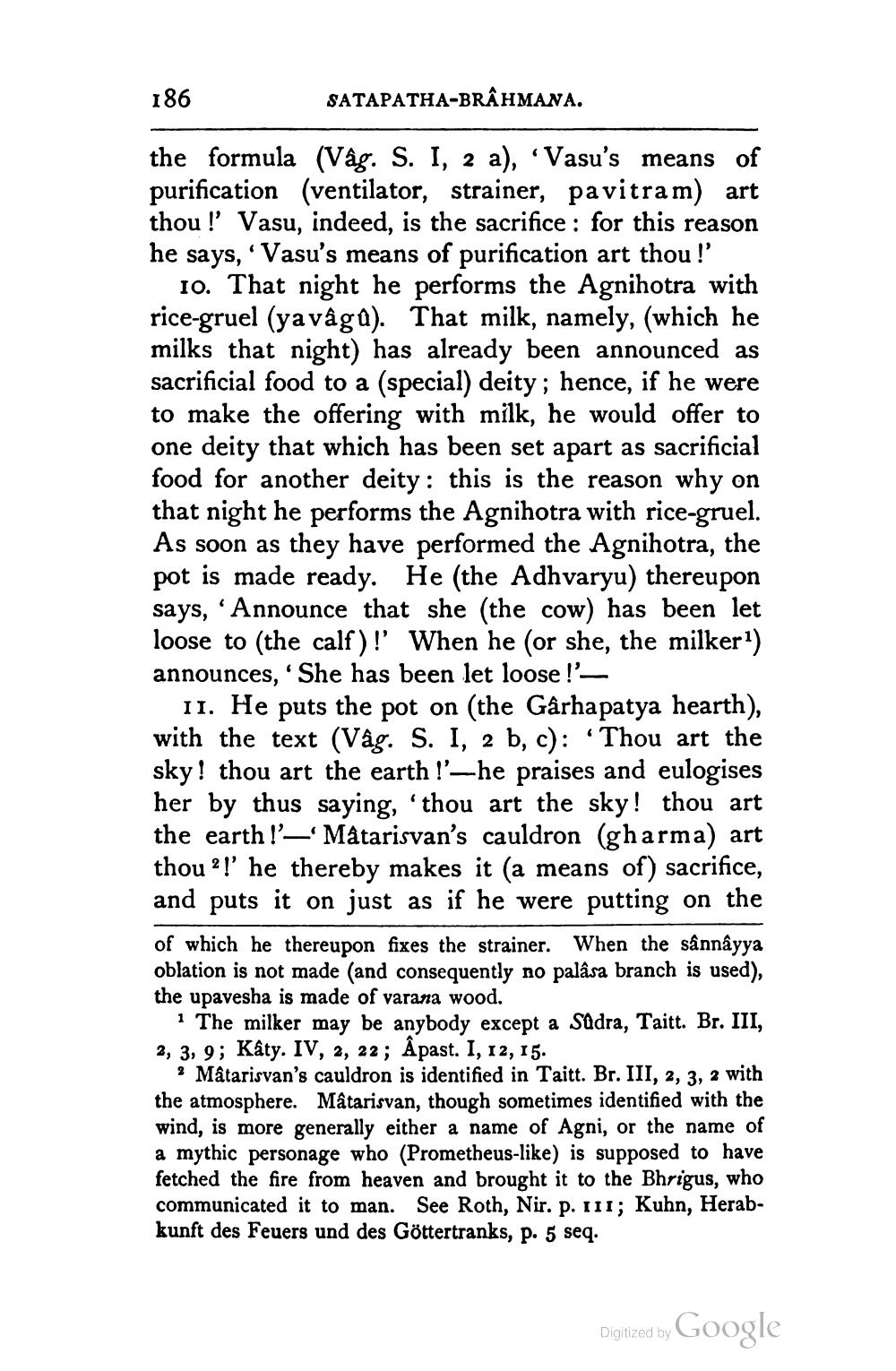________________
186
SATAPATHA-BRAHMANA.
the formula (Vâg. S. I, 2 a), “Vasu's means of purification (ventilator, strainer, pavitram) art thou !' Vasu, indeed, is the sacrifice : for this reason he says, Vasu's means of purification art thou!'
10. That night he performs the Agnihotra with rice-gruel (yavâga). That milk, namely, (which he milks that night) has already been announced as sacrificial food to a (special) deity; hence, if he were to make the offering with milk, he would offer to one deity that which has been set apart as sacrificial food for another deity: this is the reason why on that night he performs the Agnihotra with rice-gruel. As soon as they have performed the Agnihotra, the pot is made ready. He (the Adhvaryu) thereupon says, ' Announce that she (the cow) has been let loose to the calf)!' When he (or she, the milker?) announces, 'She has been let loose!'
11. He puts the pot on (the Gârhapatya hearth), with the text (Våg. S. I, 2 b, c): “Thou art the sky! thou art the earth!'-he praises and eulogises her by thus saying, 'thou art the sky! thou art the earth!'-'Mâtarisvan's cauldron (gharma) art thou ?!'he thereby makes it (a means of) sacrifice, and puts it on just as if he were putting on the
of which he thereupon fixes the strainer. When the sânnayya oblation is not made (and consequently no palâsa branch is used), the upavesha is made of varana wood.
· The milker may be anybody except a Sadra, Taitt. Br. III, 2, 3, 9; Kâty. IV, 2, 22; Âpast. I, 12, 15.
? Mâtarisvan's cauldron is identified in Taitt. Br. III, 2, 3, 2 with the atmosphere. Mâtarisvan, though sometimes identified with the wind, is more generally either a name of Agni, or the name of a mythic personage who (Prometheus-like) is supposed to have fetched the fire from heaven and brought it to the Bhrigus, who communicated it to man. See Roth, Nir. p. III; Kuhn, Herabkunft des Feuers und des Göttertranks, p. 5 seq.
Digitized by Google




